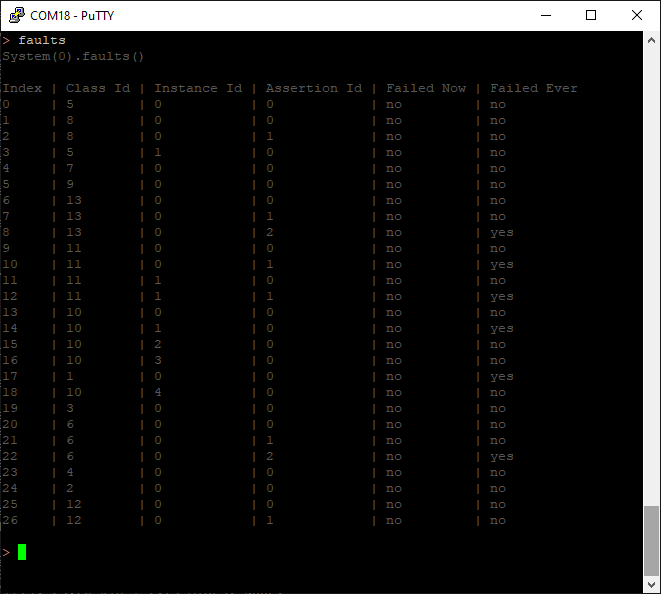System
The System circuit allows you to configure and manage your baseboard. It’s not really a circuit as such, as it doesn’t control any physical components on the PCB. However, we treat System like a type of meta-circuit in that you interface with it in the same way as a circuit. System contains a collection of useful instructions for things like setting the board id number, managing faults, reporting the circuits supported by the board, etc.
System commands can be issued from code, or from the serial terminal. System commands are especially useful when working at the terminal. Some System commands (like circuits) are only there to print information to the terminal. Although they can be called from code it wouldn’t make much sense to do so. Other commands (like set_board_id) are equally useful both in code or at the terminal.
At the serial terminal, System commands get special treatment. If the circuit is not specified when issuing a command, it is automatically assumed that it is a system command. For example, instead of System(0).circuits you just type circuits. Read more about the Serial Terminal here.
Fault Reporting
The BaseJumper source code contains a number of assert statements, which check that the code is operating as expected. A typical example of where an assertion would be used is to ensure that a receive buffer never overflows. It is very rare for an assertion to fail, and it would only happen in highly unusual opeating conditions. A fault reporting system is in place to ensure that in the unlikely event of an assertion failing, that it does not go unnoticed. The source of the assertion that failed is recorded in non-volatile memory. Recorded details include the software module (‘class id’), instance (instance id) and the particular assertion within the module (‘assertion id’). The status of faults can be checked using the faults command at the terminal. faults will report if an assertion failed the last time it was checked (‘failed now’), or if it has ever failed since the faults were last cleared (‘failed ever’). Faults can be cleared with the command clear_faults. It is often the case that software issues can be very quickly and easily remedied once the source of the issue is known. Incorrect use is the most common cause of an assertion failing.

API
circuits
void circuits()
Prints information about supported circuits (circuit types, API version and number of instanes) to the serial terminal
fault reporting
void faults()
Prints fault information to the serial terminal.
void clear_faults()
Clears the failed_ever status of all faults
board identity
void set_board_id(uint8_t id)
Sets the board ID which identifies the board on the CAN bus. Valid IDs are 1-250. IDs outside this range are reserved.
uint8_t get_board_id(uint8_t id)
Gets the board ID which identifies the board on the CAN bus. Valid IDs are 1-250. IDs outside this range are reserved.